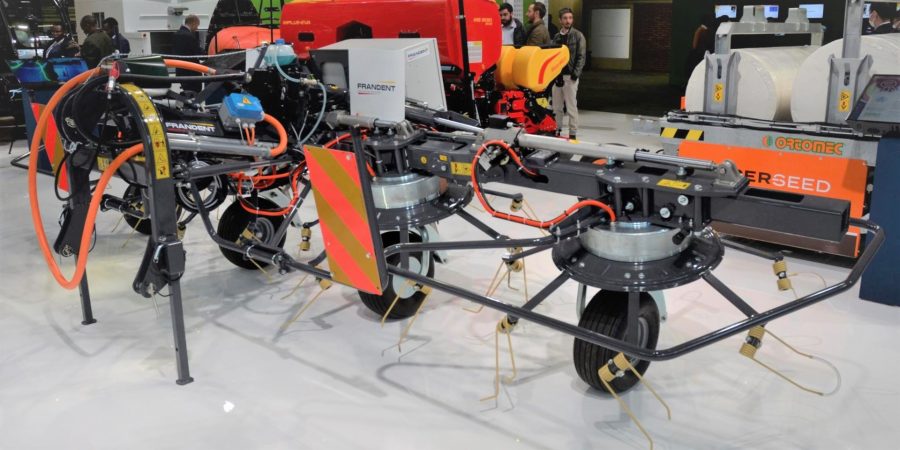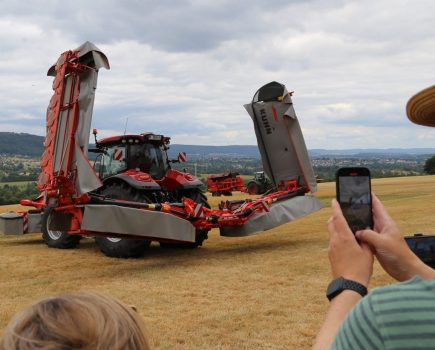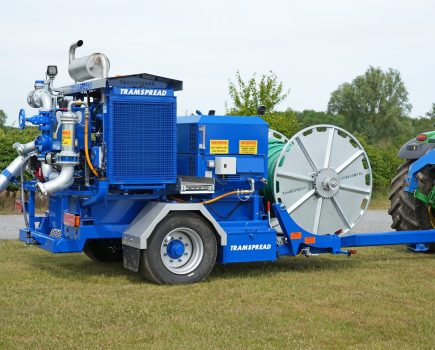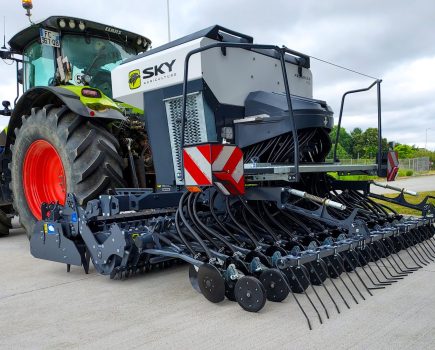Developed by Italian company Frandent, as part of the Marcel (Electric Agricultural Machines) project, the speed of the four individual electric motors above each rotor on the E-Spander 600 unit adjusts automatically to cope with heavier or lighter crops.
The company reckons it could take another 2-3 years to develop a commercial solution. The main obstacle is the expected price tag, the prototype costing more than twice that of a traditional tedder.
It remains to be seen whether we will ever see a full size electrically-powered round baler, but a prototype to produce 25kg bales for feeding to horses was on the CAEB International stand.
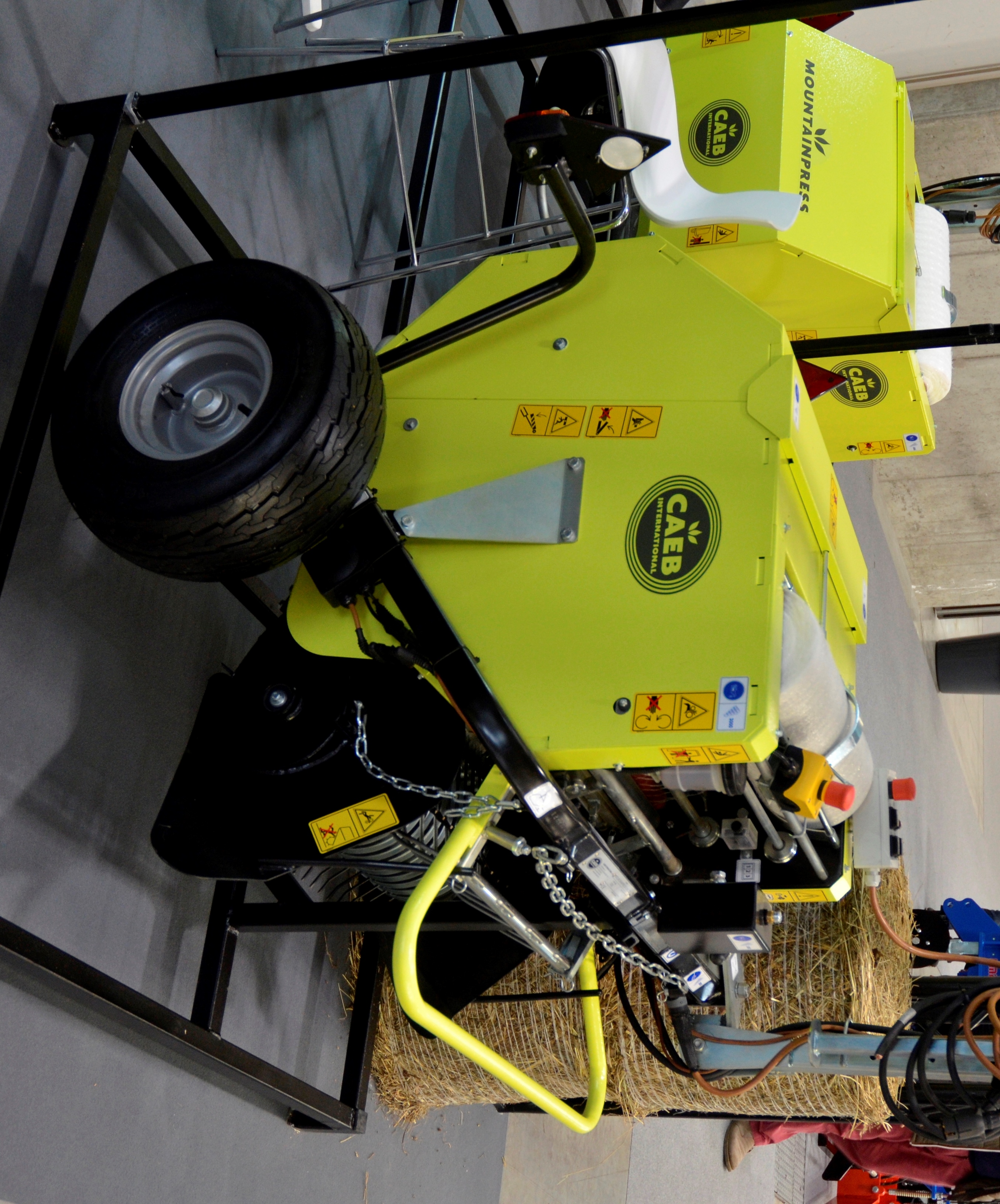
Consuming just 5kW, the single electric motor powers the belts and a hydraulic ram to open the bale chamber door. No hydraulics from the tractor are required, just an electric power supply. If it makes it to the commercial stage then it is likely to cost a third more than the current pto-powered baler.
The hybrid boost system on this Dieci AgriFarmer sees a 55kw Kubota engine mated with a generator to provide an extra 10kw of electrical power. One of the main benefits is that it has allowed the handler’s usual 79kw engine to be swapped for the smaller one, below the threshold for engine emission regulations.
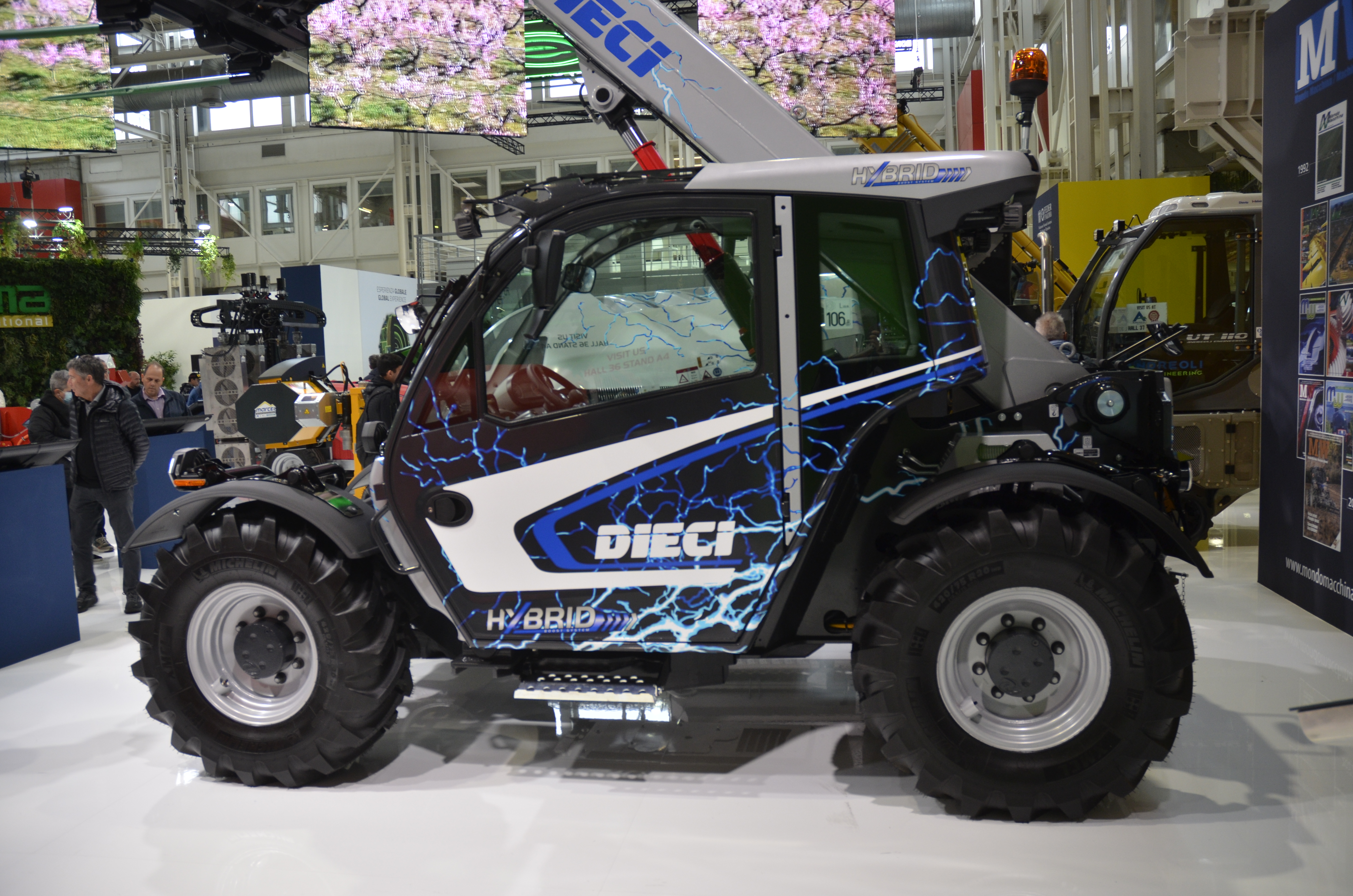
Described as a fully automatic hybrid system, there is no charging station. Excess electrical energy is stored in an on-board battery until needed. The machine, which also has optimised hydraulics and transmission, will be tested next year ahead of a possible commercial launch in 2024.

